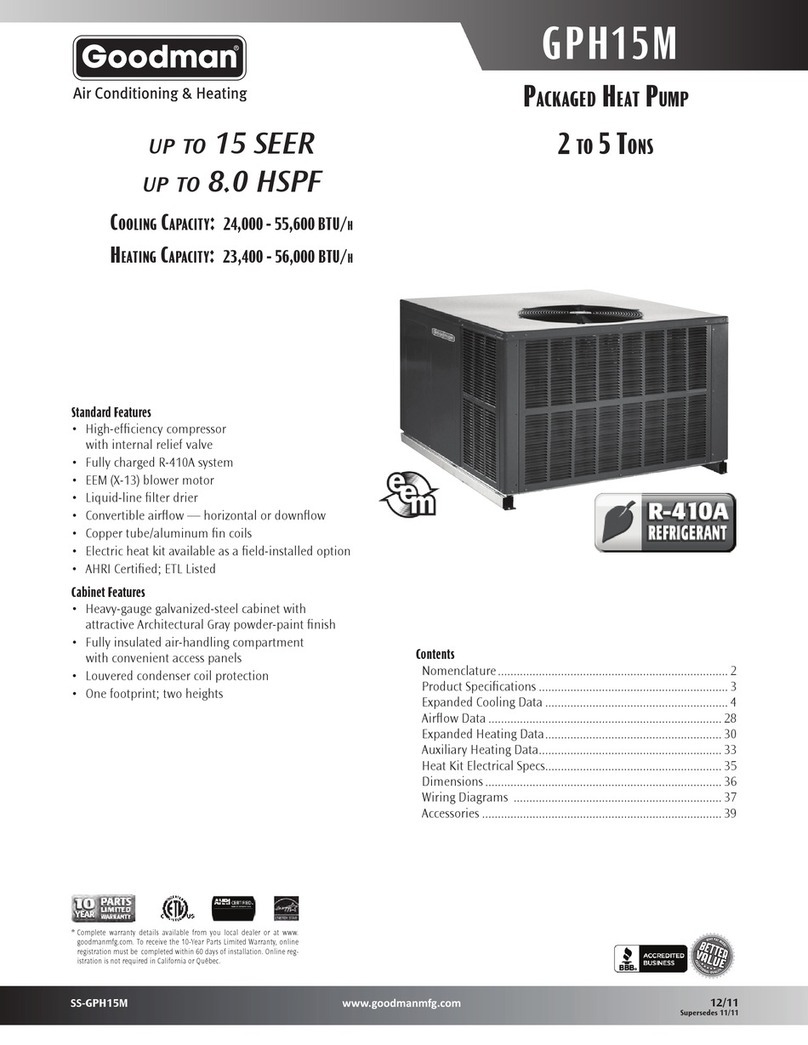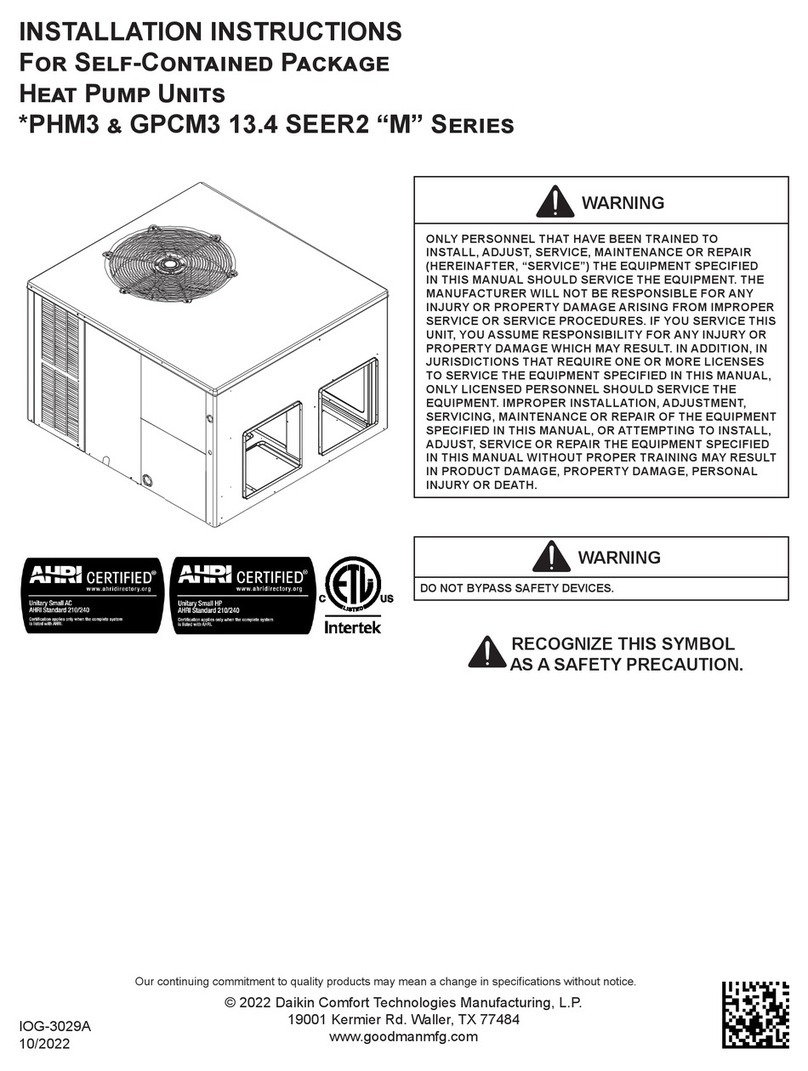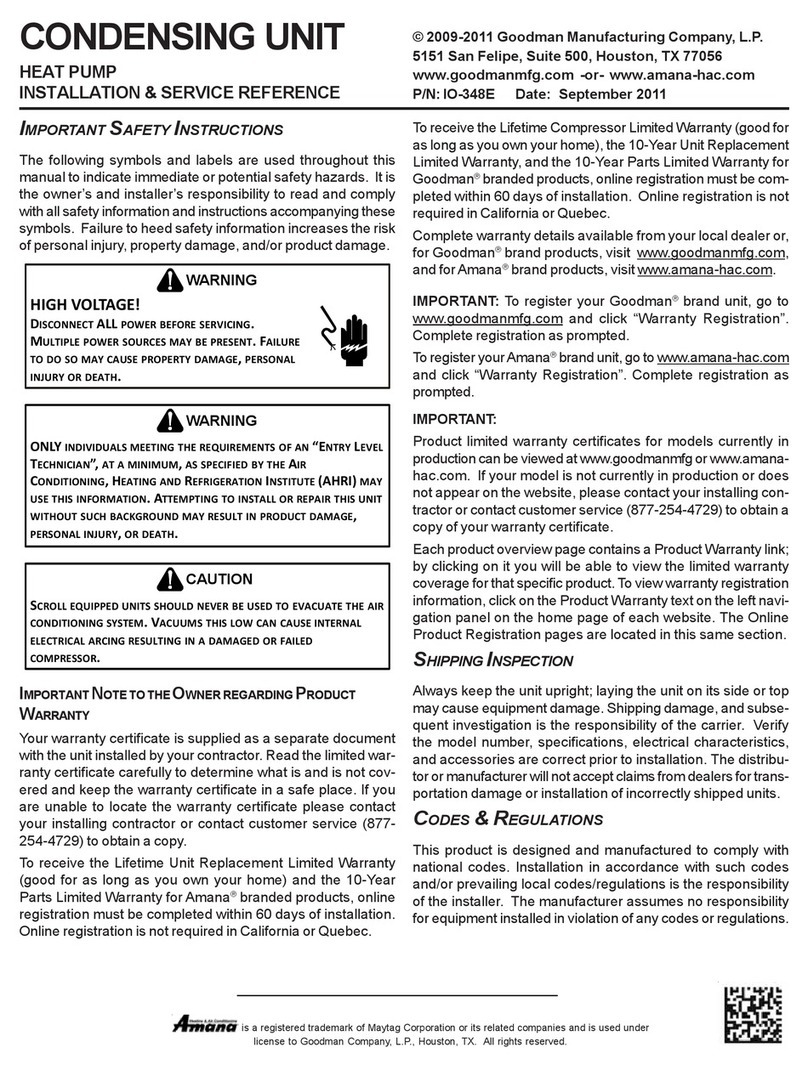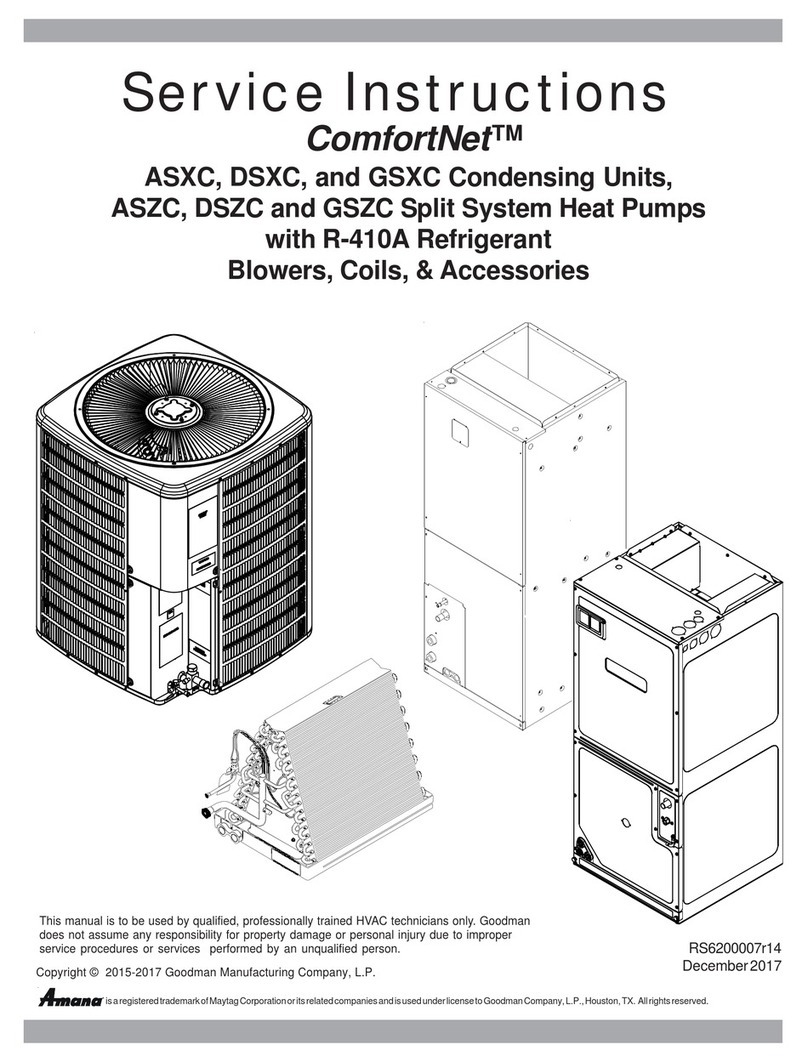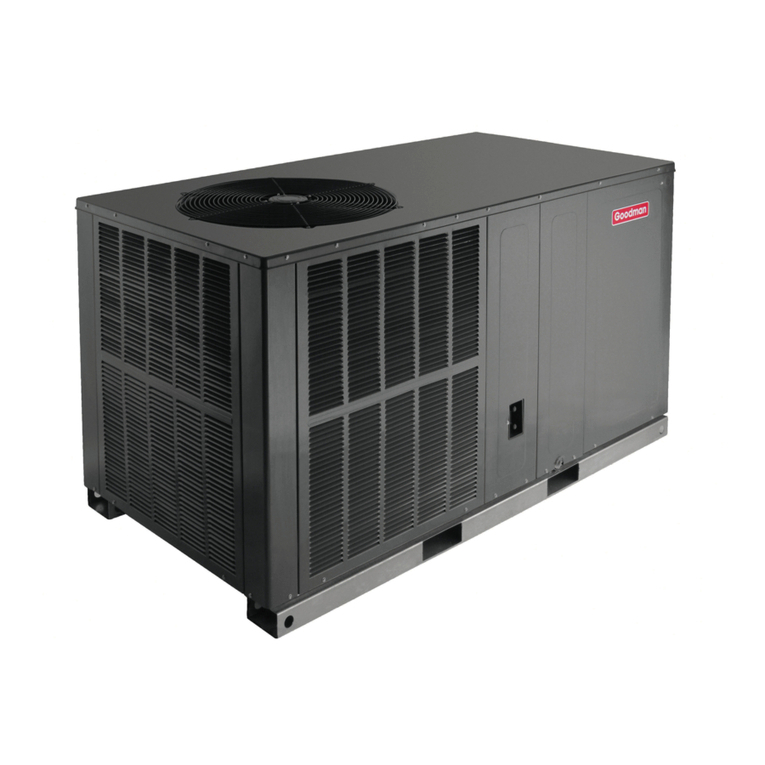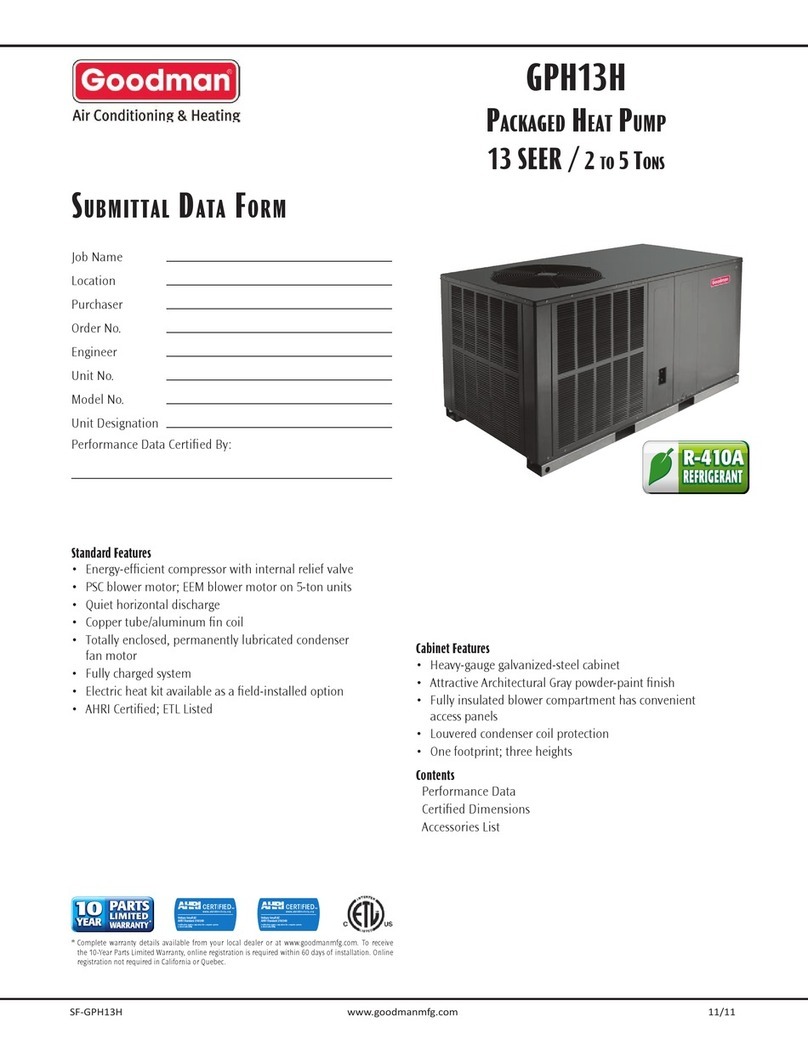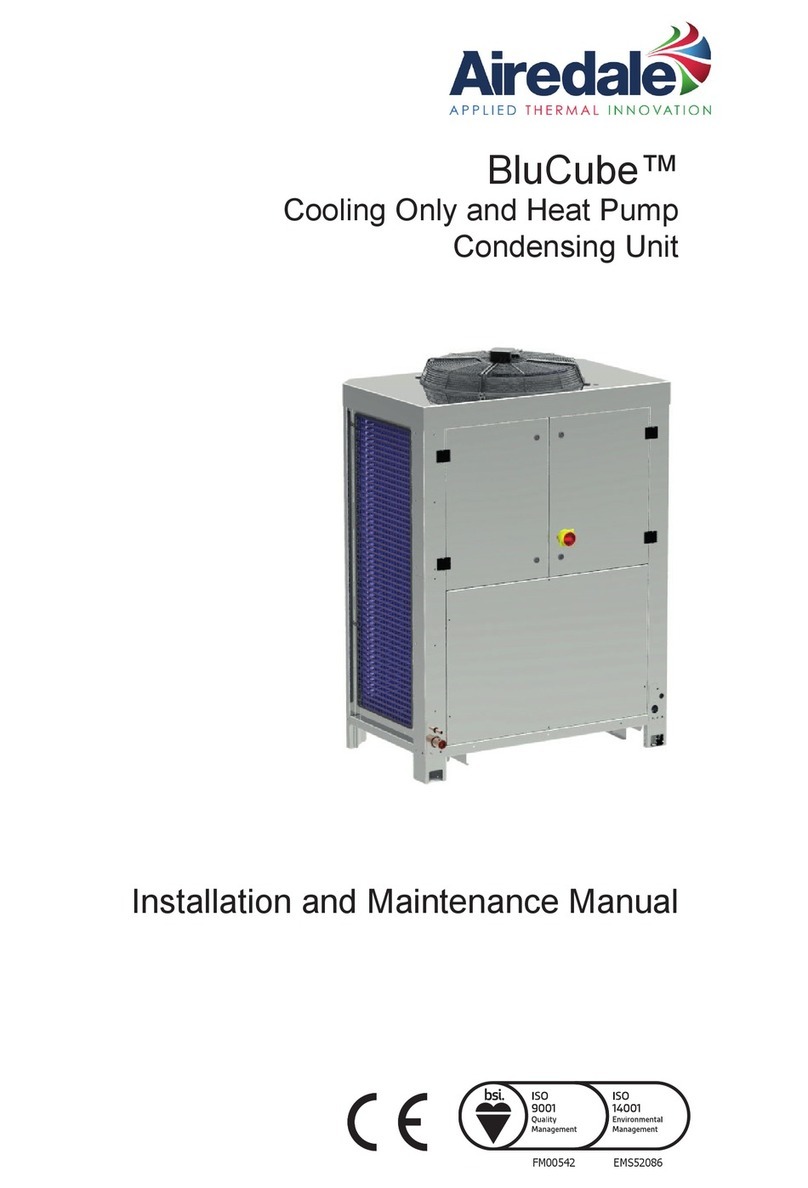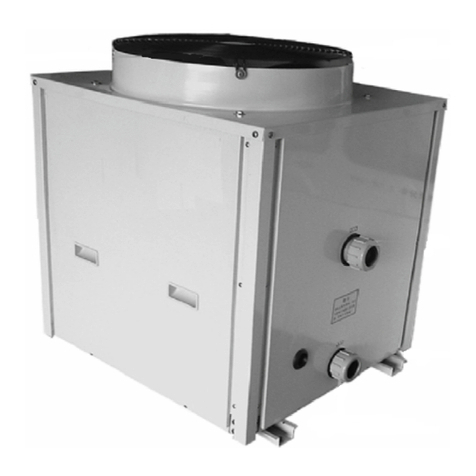
7
Final ChargeAdjustment
Theoutdoortemperature must be60°Forhigher. Set theroom
thermostat to COOL, fan switch to AUTO, and set the tem-
peraturecontrolwellbelowroomtemperature.
After system has stabilized per startup instructions, check
subcoolingandsuperheatasdetailedinthefollowing section.
Fixed Orifice
CAUTION
To prevent personal injury, carefully connect and disconnect
manifoldgauge hoses. Escapingliquid refrigerant can cause
burns. Do not vent refrigerant into the atmosphere. Recover
all refrigerant during system repair and before final unit
disposal.
1. Purge gauge lines. Connect service gauge manifold to
base-valveserviceports.Run systematleast10minutes
to allow pressure to stabilize.
2. For bestresults,temporarilyinstall athermometeronthe
suction line near the compressor. The thermometer
should be located within 4” to 6” of the compressor. En-
sure the thermometer makes adequate contact and is
insulated.
NOTE: An optional, less accurate, method is to locate
thethermometeratthesuction line service valve.Ensure
the thermometer makes adequate contact and is insu-
lated.
3. Refer to the superheat table provided for proper system
superheat. Add charge to lower superheat or recover
chargetoraisesuperheat.
4. Disconnect manifold set, installation is complete.
Superheat Formula = Suct. Line Temp. - Sat. Suct. Temp.
Expansion Valve System
Single Speed Application
1. Purge gauge lines. Connect service gauge manifold to
base-valveserviceports.Run systematleast10minutes
to allow pressure to stabilize.
2. Temporarilyinstallthermometeronliquid(small)linenear
liquid line service valve with adequate contact and insu-
lateforbest possible reading.
3.Check subcooling and superheat. Systems withTXV ap-
plicationshouldhaveasubcoolingof7±2ºFandsuper-
heat of 7 to 9 ºF.
a. Ifsubcoolingandsuperheatarelow, adjust TXV to
7 to 9 ºF superheat, then check subcooling.
NOTE: To adjust superheat, turn the valve stem
clockwiseto increase and counter clockwise tode-
crease.
b. Ifsubcoolingislowandsuperheatishigh,addcharge
to raise subcooling to 7 ± 2ºF then check super-
heat.
c. If subcooling and superheat are high, adjust TXV
valveto7to9 ºF superheat, then check subcooling.
d. If subcooling is high and superheat is low, adjust
TXVvalveto7to9ºFsuperheatandremove charge
to lower the subcooling to 7 ± 2ºF.
NOTE: DoNOTadjust thechargebasedonsuctionpres-
sureunless there is a gross undercharge.
4. Disconnect manifold set, installation is complete.
Subcooling Formula = Sat. Liquid Temp. - Liquid Line
Temp.
Two Speed Application
Runtheremoteon lowstagecoolingfor10minutes untilrefrig-
erantpressuresstabilize. Follow the guidelines and methods
below to check unit operation and ensure that the refrigerant
charge is within limits. Charge the unit on low stage.
1. Purge gauge lines. Connect service gauge manifold to
base-valveserviceports.Run systematleast10minutes
to allow pressure to stabilize.
2. Temporarilyinstallthermometeronliquid(small)linenear
liquid line service valve with adequate contact and insu-
lateforbest possible reading.
3.Check subcooling and superheat. Systems withTXV ap-
plicationshouldhavea subcooling of 5to7ºFandsuper-
heat of 7 to 9 ºF.
a. Ifsubcoolingandsuperheatarelow, adjust TXV to
7 to 9 ºF superheat, then check subcooling.
NOTE: To adjust superheat, turn the valve stem
clockwiseto increase and counter clockwise tode-
crease.
b. Ifsubcoolingislowandsuperheatishigh,addcharge
to raise subcooling to 5 to 7 ºF then check super-
heat.
c. If subcooling and superheat are high, adjust TXV
valveto7to9 ºF superheat, then check subcooling.
d. If subcooling is high and superheat is low, adjust
TXVvalveto7to9ºFsuperheatandremove charge
to lower the subcooling to 5 to 7 ºF.
NOTE: DoNOTadjust thechargebasedonsuction pres-
sureunless there is a gross undercharge.
4. Disconnect manifold set, installation is complete.
Subcooling Formula = Sat. Liquid Temp. - Liquid Line
Temp.
NOTE: Check the Schrader ports for leaks and tighten valve
cores if necessary. Install caps finger-tight.
Heat Pump - Heating Cycle
Thepropermethodof charging a heat pump in the heatmode
is by weight with the additional charge adjustments for line
size, line length, and other system components. Make final
charge adjustments in the cooling cycle.


